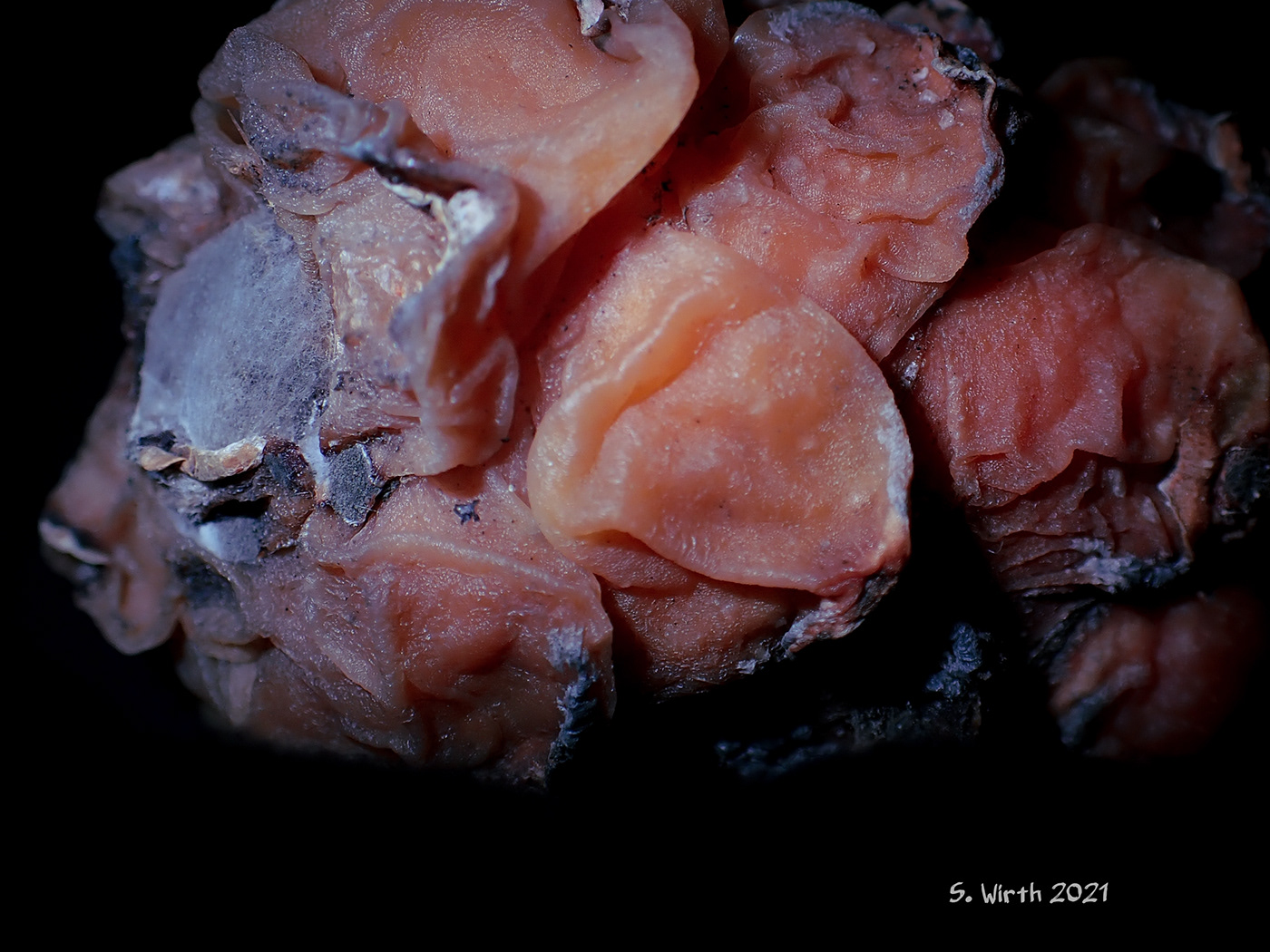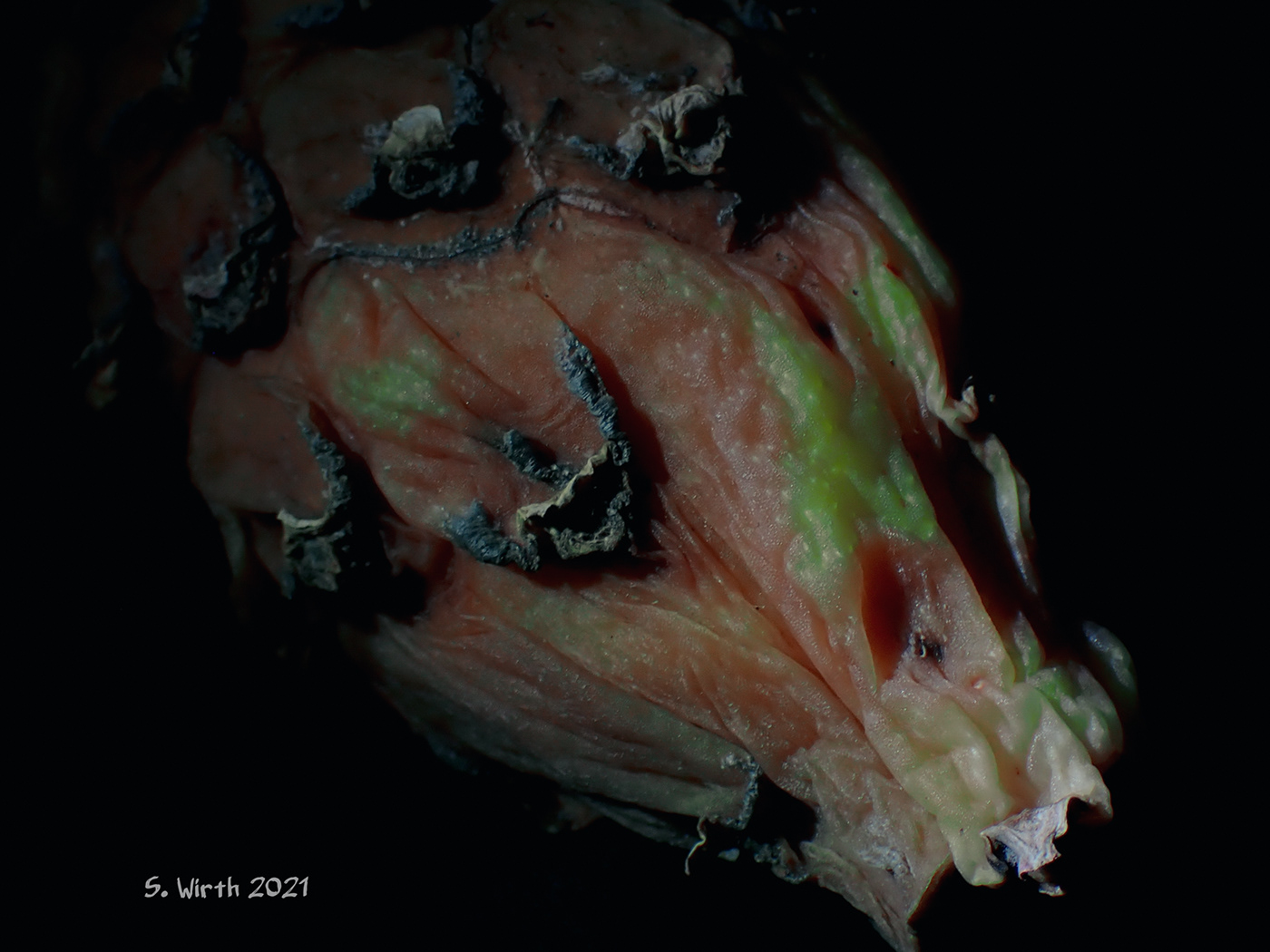

Nuances of colors during the process of decaying
Cacti
They easily survive dry conditions and are even such frugal that numerous species are popular houseplants: cacti. Their taxon name is based on the ancient Greek κάκτος, which was introduced by the philosopher and naturalist Theophrastus (371 - 287 BC). He meant a spiny plant species, but it is until today unknown, to which species exactly he referred.
Cacti belong to the systematic clade Caryophyllales and represent thus relatives to cloves. They are characterized by swollen plant stems with remarkably reduced leaves, being modified into spines. The swollen stem parts are adapted to store moisture in order to survive in habitats, which permanently or periodically are exposed to dry conditions.


Selenicereus megalanthus
S. megalanthus is a cactus species native to South America (Colombia, Peru, Equador and Bolivia). It is an epiphytically hanging plant and possesses aerial roots. Its fruits are edible and are known as Pitahayas.


The name Pitahaya refers - besides this specific species - also to other species of the same genus and even to species of Genus Hylocereus.
Fruits of S. megalanthus are yellowish colored with a white palp inside, containing many black seeds.

Detail of a Pitahaya
Ripening
Complex chemical processes are responsible for a fruit to get ripe. As in most plants, fruits are in an early stage of their development green, being based on chlorophyll as fruits are nothing else than modified leaves. The later color of a fruit is due to the storage of specific pigments, often carotenoids.


The plant hormone ethene is a most important factor during the fruit ripening by regulating the activity of different enzymes. A fruit, which shall disperse its seeds by animals, needs to have a soft consistency and a sweet taste. This is achieved through enzymes, which break down pectins and other enzymes to get softer, and which modify starch into sweet sugars to become more attractive for fruit eating animals.

Decomposing fruit of cactus Selenicereus megalanthus

Decomposing
When the stage of the maximum ripening of a fruit has been exceeded, decomposing processes are initiated by microorganisms, such as bacteria or fungi, mites and nematodes and insects. They transfer organic molecules back into the material cycle of life. Only the seeds resist decomposition. And this is the second option for a plant to reproduce successfully: Fallen fruits decay and enable the germination of new plants adjacent to their mother.
My fruit of Selenicereus megalanthus, bought in a supermarket, changed its nuances during decaying of colors from yellow to a mosaic of yellow, reddish and brownish.


Digital color manipulation as artistic variation by changing yellowish into a non existing greenish to emphasize the contrast between different colors during decomposition

Beauty of transience
The transition between light and shades in my studio shooting session created a magic atmosphere, with macroscopic structures and colors almost generating the expression of abstract art paintings. A last witness of life, shining out of the dark before passing away and plunging into a final invisibility.

Berlin, all copyrights Stefan F. Wirth, 23 February 2021




